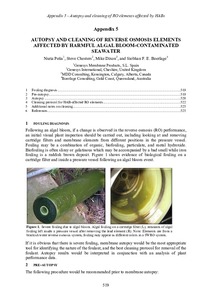Appendix 5. Autopsy and cleaning of reverse osmosis elements affected by harmful algal bloom-contaminated seawater.

View/
Average rating
votes
Date
2017Author
Peña, Nuria
Chesters, Steve
Dixon, Mike B.
Boerlage, Siobhan F. E.
Status
Published
Metadata
Show full item recordAbstract
Following an algal bloom, if a change is observed in the reverse osmosis (RO) performance,
an initial visual plant inspection should be carried out, including looking at and removing
cartridge filters and membrane elements from different positions in the pressure vessel.
Fouling may be a combination of organic, biofouling, particulate, and metal hydroxide.
Biofouling is often slimy or gelatinous which may be accompanied by a bad smell while iron
fouling is a reddish brown deposit. Figure 1 shows evidence of biological fouling on a
cartridge filter and inside a pressure vessel following an algal bloom event.
If it is obvious that there is severe fouling, membrane autopsy would be the most appropriate
tool for identifying the nature of the foulant, and the best cleaning protocol for removal of the
foulant. Autopsy results would be interpreted in conjunction with an analysis of plant
performance data......
Title of Report
Harmful Algal Blooms (HABs) and Desalination: a Guide to Impacts, Monitoring and Management.Editor(s) of Report
Anderson, D.M.Boerlage, S.F.E.
Dixon, M.B.
Page Range
pp.519-525Publisher
Intergovernmental Oceanographic Commission of UNESCOParis, France
Series;Nr
Intergovernmental Oceanographic Commission Manuals and Guides;78Document Language
enBest Practice Type
ManualCitation
Peña, N.; Chesters, S.; Dixon, M. and Boerlage, S.F.E. (2017) Appendix 5. Autopsy and cleaning of reverse osmosis elements affected by harmful algal bloom-contaminated seawater. In: Harmful Algal Blooms (HABs) and Desalination: A Guide to Impacts, Monitoring and Management. (eds. Anderson D. M.; Boerlage, S. F. E. and Dixon, M.B.) Paris, France, Intergovernmental Oceanographic Commission of UNESCO, pp.519-225. (IOC Manuals and Guides No. 78). DOI: http://dx.doi.org/10.25607/OBP-208Collections
 Repository of community practices in Ocean Research, Applications and Data/Information Management
Repository of community practices in Ocean Research, Applications and Data/Information Management